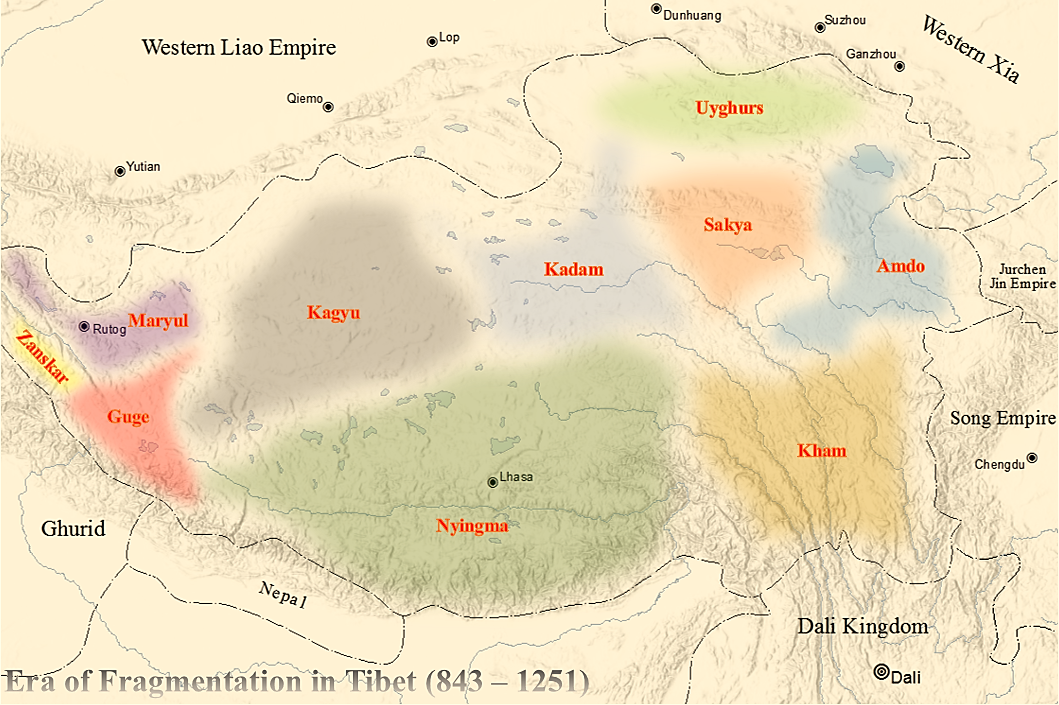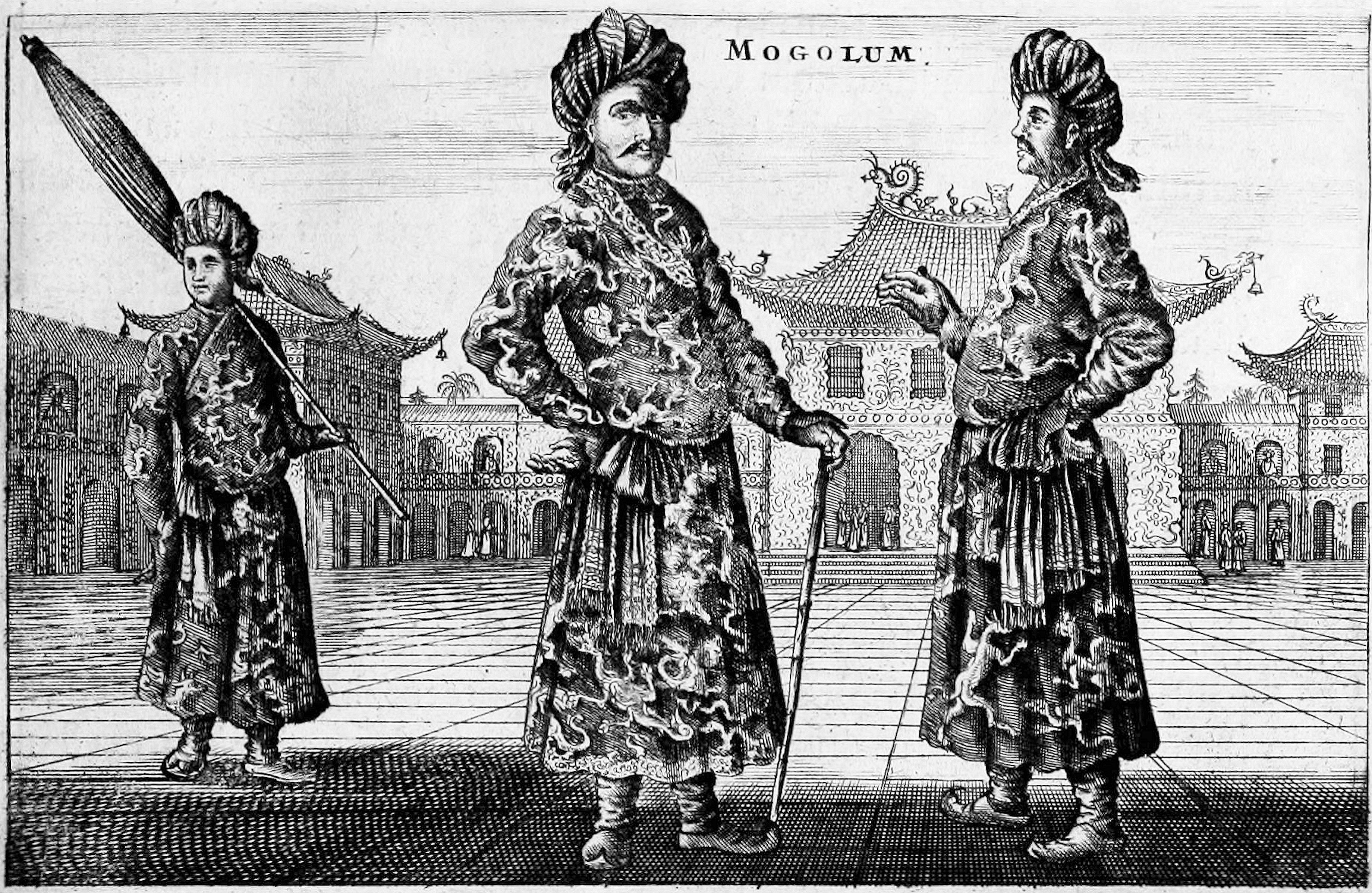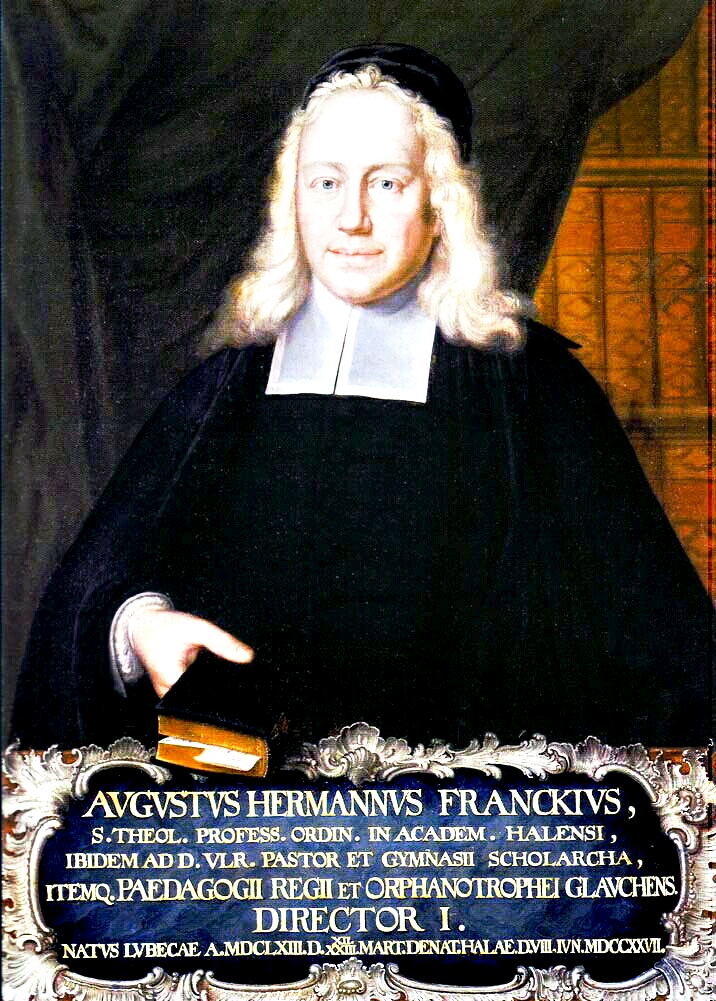|
Ngari Khorsum
Kyide Nyimagon () (), whose original name was Khri-skyid-lding, was a member of the Yarlung dynasty of Tibet and a descendant of emperor Langdarma. He migrated to Western Tibet and founded the kingdom of Ngari Khorsum ("the three divisions of Ngari") around 912 CE. After his death, his large kingdom was divided among his three sons, giving rise to the three kingdoms of Maryul (Ladakh), Guge-Purang and Zanskar-Spiti. Family After the assassination of the emperor Langdarma, the Tibetan empire entered a period of civil war over succession by Langdarma's two sons (Yum-brtan) and ('Odsrung), which divided the empire into two parts. Ösung's son Depal Khortsen (–) is believed to have controlled most or part of Central Tibet. Nyimagon was one of the sons of Depal Khortsen, the other being Trashi Tsentsän (''bKraśis-brtsegs-brtsan''). Both the sons fled Ü-Tsang (Central Tibet) in 910 when their father was murdered, at the end of the 3rd , which is taken to mark the beginn ... [...More Info...] [...Related Items...] OR: [Wikipedia] [Google] [Baidu] |
Maryul
Maryul (also called ''Mar-yul'' of ''mNgah-ris''), later the Kingdom of Ladakh, was a west Tibetan kingdom based in modern-day Ladakh and Tibet. The kingdom had its capital at Shey. The kingdom was founded by Lhachen Palgyigon, during the rule of his father Kyide Nyimagon, in .: "it seems that his father bequeathed him a theoretical right of sovereignty, but the actual conquest was effected by dPal-gyi-mgon himself." It stretched from the Zoji La at the border of Kashmir to Demchok in the southeast, and included Rudok and other areas presently in Tibet. The kingdom came under the control of the Namgyal dynasty in 1460, eventually acquiring the name "Ladakh", and lasted until 1842. In that year, the Dogra general Zorawar Singh, having conquered it, made it part of the would-be princely state of Jammu and Kashmir. Etymology ''Mar-yul'' has been interpreted in Tibetan sources as lowland (of Ngari),. Scholars suspect that it was a proper name that was in use earlier, even bef ... [...More Info...] [...Related Items...] OR: [Wikipedia] [Google] [Baidu] |
Rala, Tibet
Shiquanhe (), known in Tibetan as Sênggêkanbab () or Sênggêzangbo, is the main town and administrative seat of Ngari Prefecture, Tibet Autonomous Region, China. Shiquanhe is located on the bank of Sênggê Zangbo, the source stream of the Indus River, close to its confluence with the Gartang River. Name This modern Chinese-built town is named after the Sengge Zangbo river, the main headwater of the Indus River, on whose banks it is located. It is called "Sengge Zangbo" or "Sengge Khabab" in Tibetan and "Shiquanhe" in Chinese. Being the headquarters of Ngari Prefecture (which is known in Chinese under the Sinicized form of its name, Ali Prefecture), the town is also commonly known in English as Ngari or Ali () Town; this is what many guidebooks use as the primary name for the town. In Tibetan, Ngari is only the name for the prefecture, and not the town. Being the county seat of the Gar County, it is also referred to as Gar (). it may be labeled that way on maps.E.g. Des ... [...More Info...] [...Related Items...] OR: [Wikipedia] [Google] [Baidu] |
Tholing Monastery
Tholing Monastery (or Toling, mtho lding dgon pa མཐོ་ལྡིང་དགོན་པ) (Tuolin si 托林寺) is the oldest monastery (or gompa) in the Ngari Prefecture of western Tibet. It is situated in Tholing (Zanda), Zanda County, near the Indian border of Ladakh. It was built in 997 AD by Yeshe-Ö, the second King of the Guge Kingdom. In Tibetan language 'Tholing' means "hovering in the sky forever" and is reflected by the location of the monastery at an elevation of . The complex includes three temples, the Yeshe-O Temple, the Lhakhang Karpo and the Dukhang. There are many ancient, precious, and well-preserved frescoes. Geography The monastery is located in remote badlands of far western Tibet in Zanda County. It perches on an escarpment in the Grand Canyon along the Langchen Tsangpo (designated as Sutlej River, meaning "elephant river", in Tibet). It has a well laid out street, post office and telecommunication facilities. The isolated military installation of Za ... [...More Info...] [...Related Items...] OR: [Wikipedia] [Google] [Baidu] |
Yeshe-Ö
Yeshe-Ö ( 959–1040) (spiritual names: Jangchub Yeshe-Ö, Byang Chub Ye shes' Od, Lha Bla Ma, Hla Lama Yeshe O, Lalama Yixiwo, also Dharmaraja ('Noble King') was the first notable lama-king in Tibet. Born as Khor-re, he is better known as Lhachen Yeshe-Ö, his spiritual name. Yeshe-Ö was the second king in the succession of the kingdom of Guge in the southwestern Tibetan Plateau. Yeshe-Ö abdicated the throne in 975 to become a lama. In classical Tibetan historiography, the restoration of an organized and monastic tradition of Tibetan Buddhism is attributed to him. He built Tholing Monastery in 997 when Tholing was the capital of Guge. Yeshe-Ö' sponsored novitiates, including the great translator Rinchen Zangpo. Early life and rule From a young age, Yeshe-Ö was interested in religious matters. He was the son of king Tashi-gon (bKra-shis-mgon), and ruled the merged kingdoms of Tashigon and Detsugon, covering the regions of Purang and Guge and Zanskar, Spiti and Lahau ... [...More Info...] [...Related Items...] OR: [Wikipedia] [Google] [Baidu] |
Era Of Fragmentation In Tibet
An era is a span of time defined for the purposes of chronology or historiography, as in the regnal eras in the history of a given monarchy, a calendar era used for a given calendar, or the geological eras defined for the history of Earth. Comparable terms are Epoch (other), epoch, age (geology), age, Periodization, period, saeculum, aeon (Greek ''aion'') and Sanskrit yuga. Etymology The word has been in use in English since 1615, and is derived from Late Latin ''aera'' "an era or epoch from which time is reckoned," probably identical to Latin ''æra'' "counters used for calculation," plural of ''æs'' "brass, money". The Latin word use in chronology seems to have begun in 5th century Visigoths, Visigothic Spain, where it appears in the ''History'' of Isidore of Seville, and in later texts. The Spanish era is calculated from 38 BC, Before Christ, perhaps because of a tax (cfr. indiction) levied in that year, or due to a miscalculation of the Battle of Actium, which oc ... [...More Info...] [...Related Items...] OR: [Wikipedia] [Google] [Baidu] |
Rudok
Rudok, also spelt Rutok and Rutog, more properly Rudok Dzong (), is a town that served as the historical capital of the Rudok area in Western Tibet on the frontier with Ladakh. In the 1911 Encyclopædia Britannica, it is described as being "picturesquely situated" on the side of a hill standing isolated in the plain near the east end of Lake Pangong. Initially part of Ladakh when the kingdom was founded in the 10th century, Rudok was separated from Ladakh after of the Tibet–Ladakh–Mughal War in 1684 and annexed to Central Tibet. Close economic relations between Ladakh and Rudok nevertheless continued until the Chinese annexation of Tibet in 1949. China discontinued trade between Ladakh and Rudok, and developed Rudok into a military base for prosecuting its border claims against Ladakh. Around the year 2000, the Chinese administration of Tibet built a new Rutog Town about 10 km east of Rudok, adjacent to the China National Highway 219, and moved the county headquarters ther ... [...More Info...] [...Related Items...] OR: [Wikipedia] [Google] [Baidu] |
Palgyigon
Lhachen Palgyigon () () was the founding king of the Kingdom of Maryul, based in modern Ladakh. Palgyigon was a son of Kyide Nyimagon, a descendant of the Old Tibetan dynasty, who unified the Western Tibet (Ngari) during the Tibetan Era of Fragmentation. Palgyigon was the eldest of three brothers, the other two being Trashigon and Detsukgon. Palgyigon is said to have extended the kingdom of his father to the "Kashmir pass" (Zoji La) in the northwest, along what were referred to as the "lowlands of Ngari" (''mar-yul'' of ''mṅah‐ris''). He became an independent king after his father's death. The other two sons of Nyimagon, Trashigon and Detsukgon, also inherited the kingdoms of Guge‐ Purang and Zanskar respectively. The three kingdoms together were referred to as "Ngari Korsum" (, "the three divisions of Ngari").: "Mnah-ris (Mnga-ris), although now restricted to West Tibet, then referred to the entire territory between the Zoji and Mayum passes." The kingdom of Maryul last ... [...More Info...] [...Related Items...] OR: [Wikipedia] [Google] [Baidu] |
Zhangzhung
Zhangzhung or Shangshung was an ancient culture and kingdom in western and northwestern Tibet, which pre-dates the culture of Tibetan Buddhism in Tibet. Zhangzhung culture is associated with the Bon religion, which has influenced the philosophies and practices of Tibetan Buddhism. Zhangzhung people are mentioned frequently in ancient Tibetan texts as the original rulers of today's western Tibet. Only in the last two decades have archaeologists been given access to do archaeological work in the areas once ruled by the Zhangzhung. Extent of the Zhangzhung kingdoms Tradition has it that Zhangzhung consisted "of three different regions: sGob-ba, the outer; Phug-pa, the inner; and Bar-ba, the middle. The outer is what we might call Western Tibet, from Gilgit in the west to Dangs-ra khyung-rdzong in the east, next to lake gNam-mtsho, and from Khotan in the north to Chu-mig brgyad-cu rtsa-gnyis in the south. Ladakh, including lahaul and spiti, was part of sGob-ba. The inner region is sa ... [...More Info...] [...Related Items...] OR: [Wikipedia] [Google] [Baidu] |
Luciano Petech
Luciano Petech (8 June 1914, Trieste – 29 September 2010, Rome) was an Italian scholar of Himalayan history and the early relations between Tibet, Nepal and Italy. He was Chair of History of Eastern Asia at the University of Rome from 1955 to 1984. He was a student of the Italian explorer, academic, and scholar Giuseppe Tucci. Luciano Petech was born in 1914 and retired in 1984. He learned several European languages, including Latin, as well as Asian languages such as Tibetan, Chinese, Japanese, Newari, Sanskrit, Arabic, Hindi and Urdu. Biography Petech began his teaching career in India at 25 years old, as a reader in Italian at the University of Allahabad from 1938 to 1946. His first recorded article is for the ''Calcutta Review'' in 1939. His subject was the dramas and stories of the great Italian author Luigi Pirandello, who had recently died two years after being awarded the Nobel Prize in Literature. He says “the people” in Italy had unfairly turned their backs on ... [...More Info...] [...Related Items...] OR: [Wikipedia] [Google] [Baidu] |
August Hermann Francke
August Hermann Francke (; 22 March 1663 – 8 June 1727) was a German Lutheran clergyman, theologian, philanthropist, and Biblical scholar. Biography Born in Lübeck, Francke was educated at the Illustrious Gymnasium in Gotha before he studied at the universities of Erfurt and Kiel — where he came under the influence of the Pietist Christian Kortholt — and finally Leipzig. During his student career he made a special study of Hebrew and Greek; and in order to learn Hebrew more thoroughly, he for some time put himself under the instructions of Ezra Edzardi at Hamburg. He graduated at Leipzig, where in 1685 he became a ''Privatdozent''. A year later, by the help of his friend P. Anton, and with the approval and encouragement of Philipp Jakob Spener, he founded the Collegium Philobiblicum, at which a number of graduates met regularly for the systematic study of the Bible, philologically and practically. He next spent some months at Lüneburg as assistant or curate to the lear ... [...More Info...] [...Related Items...] OR: [Wikipedia] [Google] [Baidu] |
Burang Town
Purang or Burang, known as Puhreng in Tibetan (, IPA: puʂeŋ), is a town which serves as the administrative center of Purang County, Ngari Prefecture of the Tibet Autonomous Region ''(TAR)'', China. The town lies at an altitude of 3,900m (12,795 feet) in the valley of the Karnali River. As of 2010, the town had a population of 6,047. To the south are Gurla Mandhata (Mount Namonanyi) and the Abi Gamin ranges. Lake Manasarovar and Mount Kailash are to the north. This region is the mythological and actual river nexus of the Himalaya with sources of the Indus, Ganges and Yarlung Tsangpo/Brahmaputra all within of Purang. Etymology The Tibetan name of the town (''spu hreng'') is a corruption of the Zhang-zhung words ''pu hrang'', meaning 'horse head'. Nepalese and Indians call the town Taklakot from Tibetan 'Takla Khar' (). ''Takla Khar'' means ''Tiger Hill Castle'', which is the name of a historic Zhang-zhung fortress in the county. Saryu Karnali River's ''Peacock Mouth'' source ... [...More Info...] [...Related Items...] OR: [Wikipedia] [Google] [Baidu] |
Guge
Guge (; ) was an ancient dynastic kingdom in Western Tibet. The kingdom was centered in present-day Zanda County, Ngari Prefecture, Tibet Autonomous Region. At various points in history after the 10th century AD, the kingdom held sway over a vast area including south-eastern Zanskar, Upper Kinnaur district, and Spiti Valley, either by conquest or as tributaries. The ruins of the former capital of the Guge kingdom are located at Tsaparang in the Sutlej valley, not far from Mount Kailash and westwards from Lhasa. History Founding Guge was founded in the 10th century. Its capitals were located at Tholing and Tsaparang. Kyide Nyimagon, a great-grandson of Langdarma, the last monarch of the Tibetan Empire, fled from the insecure conditions in Ü-Tsang in 910 to arrive in Ngari (West Tibet). He established a kingdom around 912, annexing Purang and Guge. He established his capital in Guge. Nyimagon later divided his lands into three parts. The king's eldest son Palgyigon bec ... [...More Info...] [...Related Items...] OR: [Wikipedia] [Google] [Baidu] |








